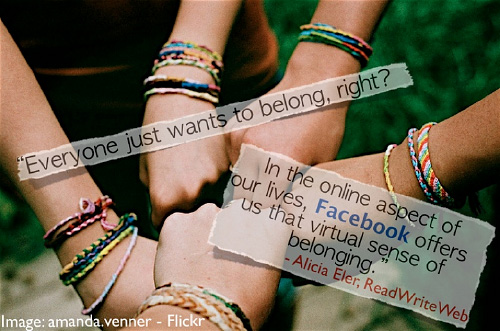Sidneyeve Matrix is associate professor, Media & Film, Queen's University.
Large class sizes make it infinitely more challenging for college instructors to connect and communicate with individual students. This might not be a big issue if professors have an army of teaching assistants running smaller tutorial groups, but that's not always the case; in my courses, for example, hundreds of students meet in a single learning space for a weekly lecture or webinar. As in online classes of any size, having a massive group of students in a single location creates the real risk that students will feel anonymous and disengaged due to a lack of meaningful interaction with their professor and peers.
To address this, instructors often use a learning management system (LMS) as a scaffold for creating course cohesion. Nearly every professor I know who teaches with Blackboard, Desire2Learn, or Moodle uses the standard threaded-discussion forums. Oftentimes, however, professors use forums either solely to broadcast announcements or as a general free-for-all discussion space that lacks structure and coherence. In the latter case — and especially in very large classes — students might view the volume of online discussion threads as downright daunting. Or, they might push back about the required discussion postings, feeling that they're too "forced."
To deal with this, instructors can easily create guidelines to help students write value-added discussion comments. They can also rethink how to get more mileage out of the LMS via more "socialized" [http://www.edudemic.com/social-learning/] instructional design. In 2010 I began using socialized course design — that is, intentionally incorporating social networking in my teaching and assignments in order to encourage students to connect and converse around the course content. In my mass communications course, which grew from 500 seats in 2010 to 1,100 by 2012, I launched a Facebook course page, used a Twitter hashtag, and created a Flickr photo-sharing group and a LinkedIn group. Although students might be familiar with how to use them, these public-facing social media platforms are not ideally suited for teaching purposes, and they have privacy risks. I then focused on how to accomplish the same level of social connectivity and social sharing and community in the course, but via the LMS, using its social features and functions and taking advantage of its security and reliability.
Socialized Instructional Design
The key to effective socialized course design lies in understanding and configuring the LMS as not (just) a content delivery mechanism for distributing grades and PDFs but also as a potentially valuable niche online networking platform that can support a series of socialized assignments.
For example, rather than having one or two all-purpose discussion forums, faculty could instead have students create (individually or in groups) research-based poster presentations or infographics and share them in an LMS discussion forum, adding a required number of peer-to-peer critiques or comments to the LMS.
I have had some success with this kind of assignment. In my largest courses (1,000+ seats) I have students create digital postcards and share them in the LMS. To do so they must first highlight a key statistic or quote from the textbook readings, then combine it with a Creative Commons licensed photo from Flickr, and publish the finished product in the LMS forum. Figure 1 shows an example (for more examples, see my posts on Pinterest). After the postcards are published, students earn additional points for engaging in a peer critique via the forum. Commenting on the design of the postcard, or the significance of the statistic illustrated, or both, makes the online discussions lively and highly varied. In a large class, with hundreds of postcards and student comments, this assignment successfully engages students in a peer-learning community space and requires limited input from the professor.

Figure 1. A postcard created and posted on the LMS forum for FILM240: Media and Culture
Benefits
Socializing assignments in this way adds a layer of transparency to the class that lets students observe and enjoy their peers' creativity demonstrated online. It's also an opportunity for low-stakes feedback in the form of peer-to-peer comments that can help students see how they are performing vis-a-vis the rest of the class. As well, these kinds of social assignments help students practice delivering and responding to constructive criticism.
Adding more student voices, perspectives, and content to the LMS is virtually guaranteed to increase student motivation, course satisfaction, and a sense of digital togetherness and community. As a professor teaching a supersized class, I can also attest to the fact that incorporating LMS-supported social teaching and learning activities removes some pressure from the prof, because students critically engage with each other's work with far greater frequency and speed than any single instructor ever could.
In the process of developing socialized teaching assignments around LMS forums over a three-year period, I have observed a gradual improvement in student outcomes — even on the non-social aspects of the course, such as the final exam. Moreover, on end-of-term course evaluations, students often comment that the opportunity to receive constructive criticism on their creative work from peers was enormously beneficial. This experience has reminded me that for a generation growing up on Facebook, social learning on digital platforms is a natural extension of the way they use technology every day.
For additional online and "social assignments" ideas for LMSs, see my list, which includes examples of and tools for creating digital scientific posters, infographics, and annotated online bibliographies.
© 2014 Sidneyeve Matrix. The text of this EDUCAUSE Review Online blog entry is licensed under the Creative Commons Attribution-Noncommercial-No derivative works 3.0 license.
